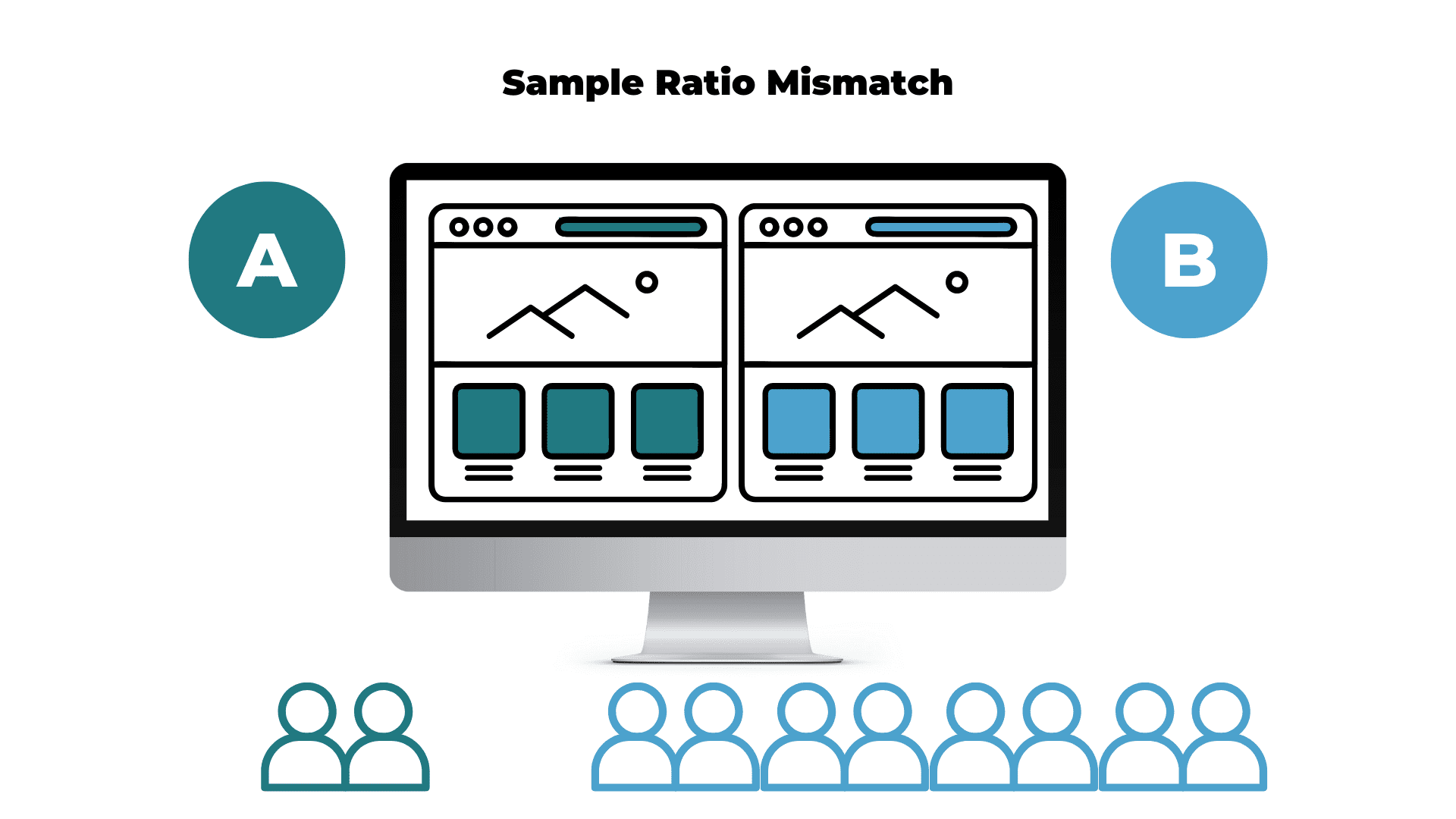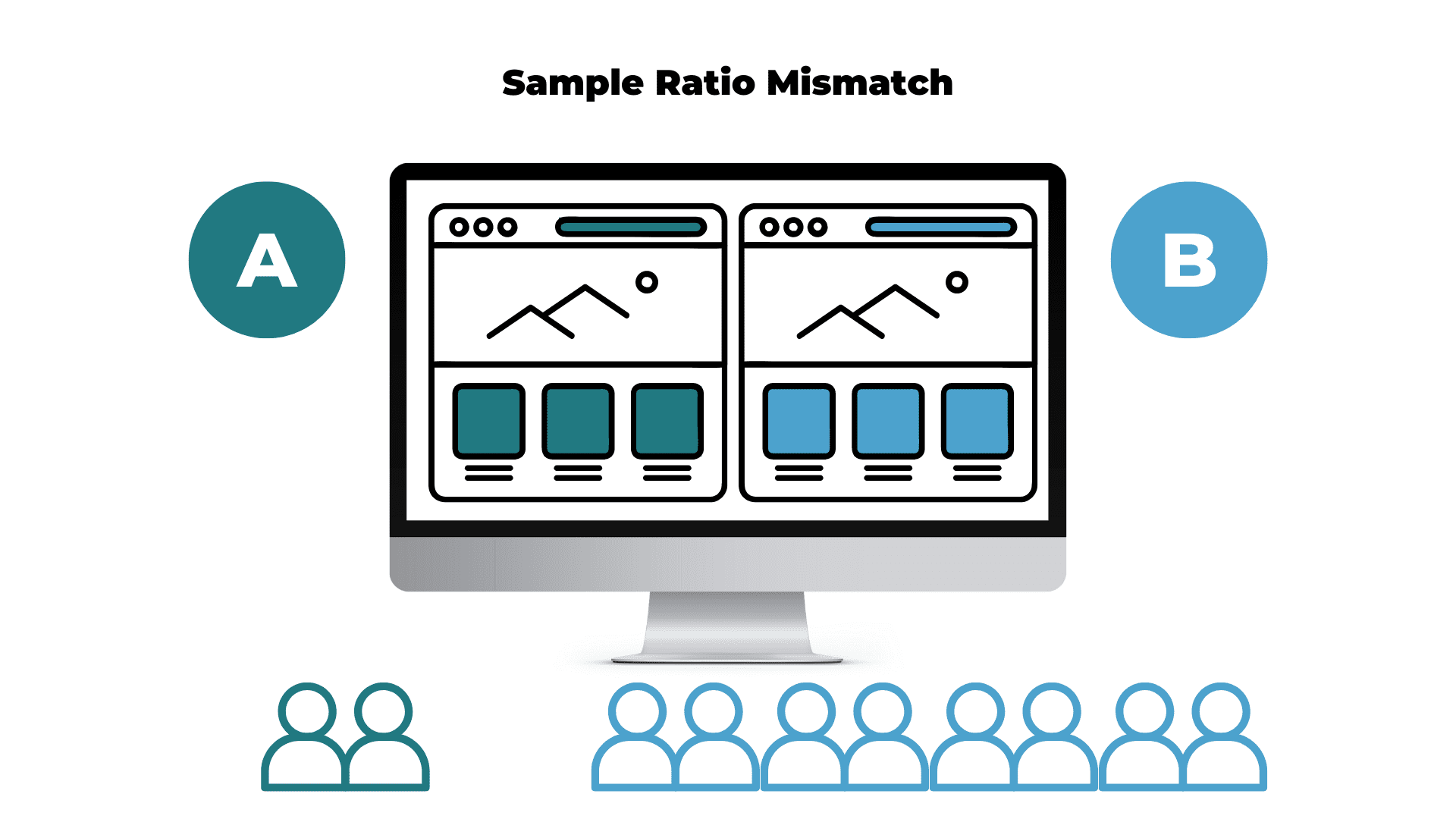In the fast-paced world of digital marketing, mastering Conversion Rate Optimization (CRO) is essential for maximizing the performance of your campaigns. For businesses operating in Sydney, understanding the nuances of Sample Ratio Mismatch (SRM) checks and navigating the common challenges of traffic allocation can make all the difference between success and missed opportunities. This comprehensive guide dives deep into the best practices for conducting effective SRM checks, helping you ensure your traffic is optimally distributed and your experiments yield reliable, actionable insights. Whether you’re a seasoned marketer or just starting out, this Sydney CRO Guide will equip you with the knowledge and strategies to avoid common pitfalls and elevate your conversion rates to new heights.
1. Understanding Sample Ratio Mismatch (SRM) in CRO
Understanding Sample Ratio Mismatch (SRM) is essential for anyone looking to optimize their conversion rate optimization (CRO) efforts effectively. At its core, SRM involves controlling how traffic is divided among different variations of your web pages or marketing campaigns during A/B or multivariate testing. By carefully managing the split ratio, you ensure that each variation receives an appropriate share of visitors, which helps in collecting reliable data and drawing accurate conclusions about performance.
In practice, SRM allows you to allocate more traffic to high-performing variations to maximize conversions while still testing new ideas on a smaller segment of your audience. Conversely, it helps prevent overexposing underperforming versions, minimizing potential negative impacts on overall campaign results. Mastering SRM means striking the right balance between exploration and exploitation—testing new designs or offers without compromising your site’s existing conversion rates.
For those operating in dynamic markets like Sydney’s competitive eCommerce or digital marketing scenes, understanding and implementing effective SRM can be a game-changer. It not only enhances the quality of your test data but also accelerates the decision-making process, enabling you to optimize faster and with greater confidence. As you dive deeper into your CRO initiatives, keeping SRM at the forefront will help you avoid common pitfalls such as skewed traffic distribution and misleading performance metrics, ultimately driving better outcomes for your campaigns.

2. The Importance of SRM Checks for Accurate Experimentation
When it comes to Conversion Rate Optimization (CRO) in Sydney’s competitive digital landscape, ensuring the accuracy of your experiments is paramount. This is where SRM (Sample Ratio Mismatch) checks play a critical role. SRM checks help verify that the traffic allocation in your experiments aligns with the expected distribution, ensuring that your test results are statistically valid and reliable. Without these checks, you risk making decisions based on skewed data caused by uneven traffic splits or technical glitches, which can lead to misguided strategies and lost opportunities. By incorporating regular SRM checks into your experimentation process, you not only safeguard the integrity of your data but also gain clearer insights into user behavior, enabling you to optimize your website effectively and drive meaningful growth. Ultimately, mastering SRM checks is essential for any marketer or analyst aiming to maximize the impact of their CRO efforts and avoid common pitfalls in traffic allocation.
3. Common Traffic Allocation Pitfalls and How to Avoid Them
When managing Conversion Rate Optimization (CRO) experiments in Sydney or anywhere else, one critical aspect to get right is traffic allocation. Mismanaging how your website traffic is distributed across different test variations can lead to skewed results, wasted resources, and ultimately, poor decision-making. One common pitfall is allocating too much traffic to underperforming variations too early in the testing phase, which can dilute the impact of your winning variant and prolong the experiment unnecessarily. Another frequent issue arises when traffic is unevenly split due to technical glitches or improper setup, causing biased data that doesn’t accurately reflect user behavior. To avoid these pitfalls, it’s essential to implement systematic SRM (Sample Ratio Mismatch) checks throughout your testing cycle. Regularly monitoring for SRM helps ensure that traffic is being correctly distributed as intended, and any discrepancies can be quickly identified and addressed. Additionally, starting with a smaller percentage of traffic and gradually increasing it as confidence in test stability grows can minimize risks. Using robust CRO tools with built-in traffic management features and maintaining clear documentation of your experiment parameters further safeguards against allocation errors. By staying vigilant and proactive in managing traffic allocation, you can ensure more reliable test outcomes and make data-driven decisions that truly enhance your website’s performance.
4. Best Practices for Implementing Effective SRM Checks
Implementing effective SRM (Sample Ratio Mismatch) checks is crucial for maintaining the integrity of your Conversion Rate Optimization (CRO) efforts in Sydney’s competitive digital landscape. To ensure your SRM checks deliver accurate and actionable insights, consider adopting these best practices:
1. Establish Clear Objectives: Before initiating SRM checks, define what you aim to achieve—whether it’s identifying biased search results, detecting fraudulent traffic sources, or ensuring fair traffic allocation. Clear goals help tailor your SRM strategy to your specific business needs.
2. Use Reliable Tools and Data Sources: Leverage reputable SRM monitoring tools that provide comprehensive data on search rankings, click patterns, and traffic sources. Integrate multiple data points to cross-verify findings and detect anomalies effectively.
3. Regular and Consistent Monitoring: Conduct SRM checks at regular intervals to promptly identify any irregularities or shifts in search result patterns. Consistency is key to catching subtle manipulations before they impact your conversion rates.
4. Segment Traffic Sources: Differentiate between organic, paid, and referral traffic when analyzing SRM data. This segmentation helps pinpoint exact sources of potential manipulation and informs targeted corrective actions.
5. Collaborate with Technical and Marketing Teams: Ensure seamless communication between your SEO specialists, developers, and marketing professionals. A collaborative approach enables swift implementation of fixes and optimization of traffic allocation strategies.
6. Document Findings and Actions: Keep detailed records of SRM check results and the measures taken to address issues. This documentation not only aids in tracking progress but also supports transparency and accountability within your CRO processes.
By following these best practices, you can enhance the accuracy and effectiveness of your SRM checks, safeguarding your ecommerce website’s traffic quality and ultimately driving better conversion outcomes in the Sydney market.

5. Tools and Techniques for Monitoring and Adjusting Traffic Allocation
Effectively monitoring and adjusting traffic allocation is crucial for maximizing the success of your Conversion Rate Optimization (CRO) efforts in Sydney’s competitive digital landscape. To achieve this, a combination of powerful tools and proven techniques is essential. Start by leveraging analytics platforms such as Google Analytics and Adobe Analytics, which provide comprehensive insights into user behavior, traffic sources, and conversion funnels. These tools enable you to track the performance of different segments of your traffic allocation in real-time.
In addition to analytics, specialized experimentation platforms like Optimizely, VWO, or Google Optimize allow you to run A/B tests and multivariate tests with precise control over how traffic is distributed across variations. These platforms often include built-in traffic allocation controls, making it easier to adjust percentages on the fly based on performance data. For example, if one variant is underperforming, you can reduce its traffic share to minimize risk, or conversely, increase exposure to a winning variation.
Complement these tools with regular SRM (Sample Ratio Mismatch) checks to ensure your experiments and traffic routing are functioning smoothly without technical issues. Techniques such as incremental traffic ramp-ups—gradually increasing the traffic to a new variation—help mitigate potential adverse impacts, while real-time dashboards and alerts keep your team informed of critical shifts or anomalies.
By combining robust analytics, flexible experimentation platforms, and vigilant monitoring practices, you can confidently optimize traffic allocation, avoid common pitfalls, and ultimately boost your CRO success in Sydney’s dynamic online market.
6. Case Studies: Successful CRO Campaigns in Sydney Using SRM
In the competitive digital landscape of Sydney, businesses that have mastered the art of Conversion Rate Optimization (CRO) through Sample Ratio Mismatch (SRM) checks are seeing remarkable results. One standout example is a leading Sydney-based e-commerce retailer that leveraged SRM to fine-tune their traffic allocation and maximize conversions. By meticulously analyzing user behavior data and conducting stringent SRM checks, they identified underperforming traffic segments and reallocated resources to high-value audiences. This strategic shift resulted in a 25% increase in conversion rates within just three months, alongside a significant boost in average order value.
Another compelling case comes from a SaaS company that faced challenges with inconsistent traffic distribution across their landing pages. Implementing SRM checks allowed them to detect discrepancies early and optimize their traffic allocation algorithms. Through ongoing monitoring and adjustments, they reduced wastage of ad spend and improved lead quality, which translated into a 30% uplift in demo requests and a 15% decrease in customer acquisition cost.
These case studies highlight the power of SRM in ensuring that traffic is not just abundant but effectively targeted. By incorporating rigorous SRM checks into their CRO strategies, Sydney businesses can avoid common pitfalls related to traffic allocation and unlock higher returns on their marketing investments. Whether you operate in retail, tech, or services, applying these proven tactics can be a game-changer in your CRO efforts.
7. How Uneven Traffic Distribution Skews Test Results and Business Decisions
Uneven traffic distribution during Conversion Rate Optimization (CRO) tests can significantly distort your test results, leading to misguided business decisions. When traffic isn’t evenly allocated across your test variants, certain segments may be overrepresented or underrepresented, causing skewed data that doesn’t accurately reflect user behavior. For example, if one variant receives a disproportionate share of high-converting visitors due to uneven traffic allocation, it may appear more successful than it truly is. This misrepresentation can lead businesses to implement changes based on flawed insights, potentially harming overall performance rather than improving it. Moreover, uneven traffic distribution can mask the true impact of test changes by introducing bias linked to time of day, device type, or user demographics. To ensure reliable and actionable CRO outcomes, it’s critical to maintain balanced traffic allocation throughout your experiments, allowing for valid comparisons and confident decision-making that drives genuine growth.
8. Aligning SRM Integrity with Sydney’s Unique eCommerce Traffic Patterns
When mastering SRM (Sample Ratio Mismatch) checks within Sydney’s dynamic eCommerce landscape, it’s crucial to align SRM integrity with the city’s unique traffic patterns. Sydney’s eCommerce ecosystem experiences distinct fluctuations influenced by factors such as regional holidays, local events, and peak shopping seasons like Christmas and EOFY sales. Understanding these patterns allows businesses to tailor their SRM strategies to anticipate and accommodate sudden spikes or drops in traffic, ensuring consistent site performance and reliability. Implementing adaptive monitoring thresholds that reflect Sydney-specific user behavior helps prevent false positives and reduces unnecessary traffic allocation pitfalls. Additionally, integrating real-time analytics with SRM tools provides deeper insights into traffic sources and user engagement, empowering businesses to make informed decisions that enhance customer experience while maintaining optimal resource allocation. Aligning SRM integrity with Sydney’s eCommerce rhythms is not just about technology—it’s about embracing the local market nuances to build resilient, high-performing online stores that thrive amid fluctuating demands.

If you found this article helpful and need help with your website conversion, contact us for a FREE CRO Audit




